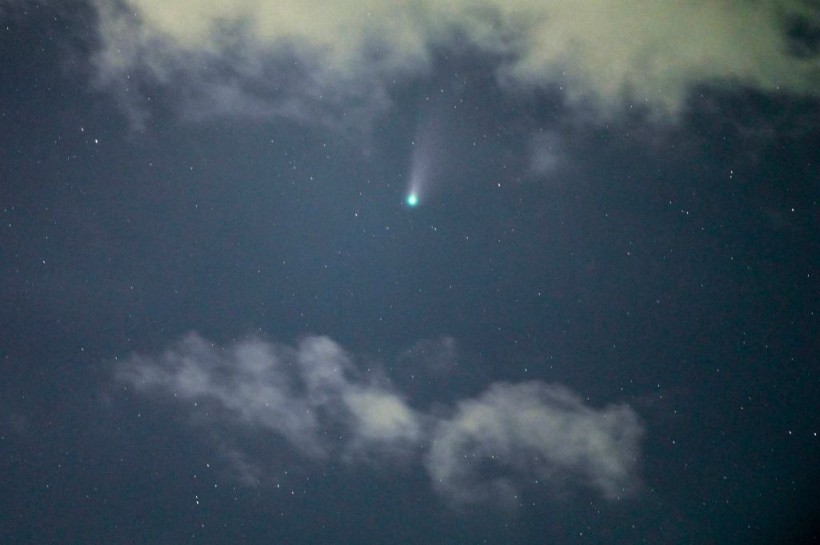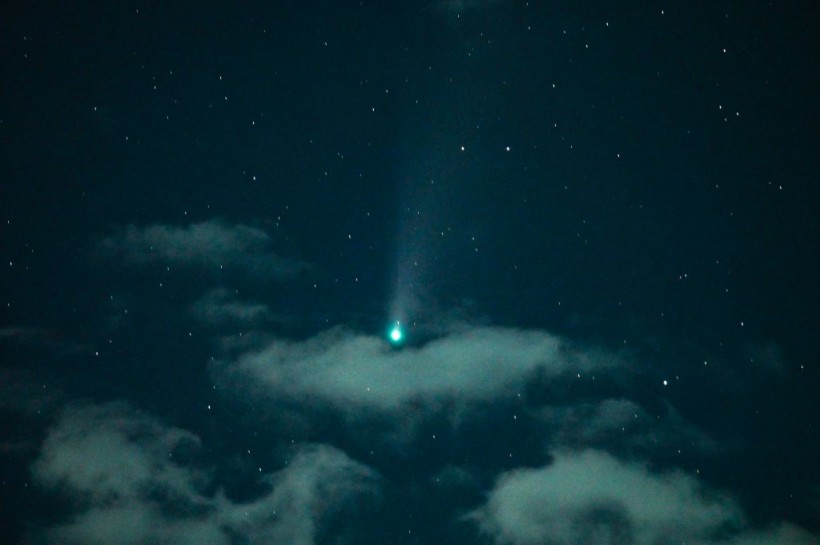The brightest ever comet in our entire solar system, the K2, is passing near Earth by this week.
Scientists have been looking closely at this ultra-bright comet for half a decade, or roughly five years, to be more precise.

(Photo : YE AUNG THU/AFP via Getty Images)
This long-exposure photograph taken on July 25, 2020 shows the Comet NEOWISE (C/2020 F3) in the sky over Monywa in the Sagaing region in Myanmar.
And this time, the C/2017 K2 PANSTARRS comet, or simply known as the K2, is finally swinging by its nearest pass through the Earth.
It is a monumental event for scientists that have been observing the K2 comet for a while now. But amateur astronomers or hobbyists could also take a good look at it, thanks to its near encounter with our home planet this week.
Brightest Comet K2 is Passing By Earth
As per a news story by Phys.org, the Earth, planetary, and space sciences professor at the University of California in Los Angeles, David Jewitt, says that now is our chance to spot the bright K2 comet as it makes its final swing by the solar system.
But despite the upcoming approach to the Earth, the K2 comet still requires people to use binoculars or even a small telescope to see it. It means that our naked eye looking up at the sky would not suffice.
Even as the K2 is closing in on our home planet, Jewitt clarifies that it is still roughly 170 million miles away from Earth. So if you are trying to look for it using your naked eye or smartphone camera, you will be utterly disappointed.
The University of California professor says that the K2 comet is still far even if this would be its closest near the Earth. But it would be close enough for binoculars or a small telescope to spot right away.
And as such, it no longer requires any professional telescope to get a glimpse of it, thanks to its approaching close encounter with the Earth.
Pys.org adds in its report that Jewitt says the brightest star in the solar system, the sun, is around 93 million miles away from us.
According to a recent report by Interesting Engineering, the University of California professor says "it's probably the most primitive thing in the inner solar system at this time."
Read Also: The Largest Comet Will Come Close to Earth on July 14, Here's How to See It
Brightest Comet K2: How to See It
All that said, it is now crystal clear that if you want to take a look at the K2 comet, you will only be needing a pair of binoculars or a basic small telescope.

(Photo : YE AUNG THU/AFP via Getty Images)
TOPSHOT - This long-exposure photograph taken on July 24, 2020 shows a view of the Comet NEOWISE (C/2020 F3) in the sky over Shwebo, Sagaing region in Myanmar.
Phys.org precisely reports that it would be nearest at around 11 pm Eastern time on July 13, Wednesday.
Related Article: Newly Discovered K2-288Bb Planet Lies Within Habitable Zone And May Have Liquid Water On Its Surface
This article is owned by Tech Times
Written by Teejay Boris








